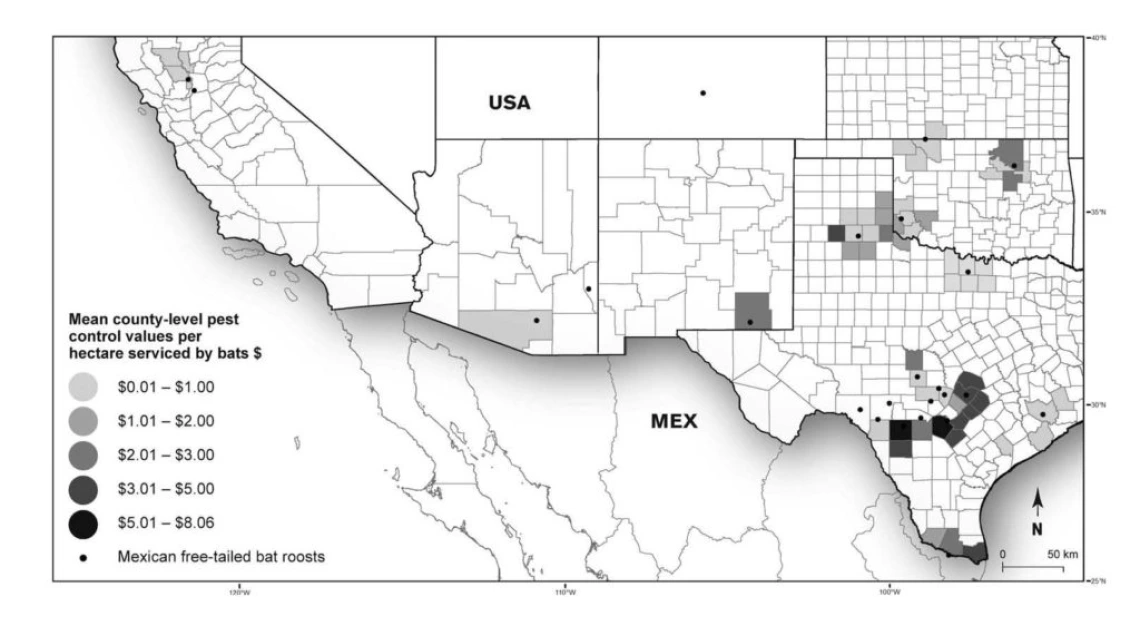Migrating bats provide free pest-suppression services to farmers in the borderlands between Mexico and the United States.
Pest-suppression services by Mexican free-tailed bats in the southwestern US
Migrating Mexican free-tailed bats (Tadarida brasiliensis mexicana) provide free pest-suppression services to farmers in the southwestern US. These bats not only help individual farmers stay in the black, but also reduce the need for pesticides that could enter the environment.

We have estimated that the bats provided an annual average of US$12.4 million in pest control services in cotton fields across the U.S. southwest from 1990 to 2008.
In the spring, Mexican free-tailed bats migrate north from central and southern Mexico to the US border region and form huge colonies to raise their young. These bats are insectivores, eating a wide variety of flying insects including cotton bollworm moths, which do significant damage to cotton and soybean crops. For individual farmers in the region, this free removal of vast quantities of these crop pests can represent considerable savings in pesticide costs.
Calculations of the value in dollars of these services are an important incentive for governments to pass habitat protection measures. For example, a collaboration of NGOs and the San Antonio city government bought 5,000 acres (2,000 ha) of land around Bracken Cave, the largest bat colony in the world, which was threatened by a housing development. With Bracken Cave’s bats consuming an estimated quarter of a million pounds (113,000 kg) of insects nightly, the value of the pest suppression activities of this colony alone is estimated at $3.42 million per year (Wiederholt et al. 2015).

Figure 1. Value estimates for bat ecosystem services by county in the southwestern United States
